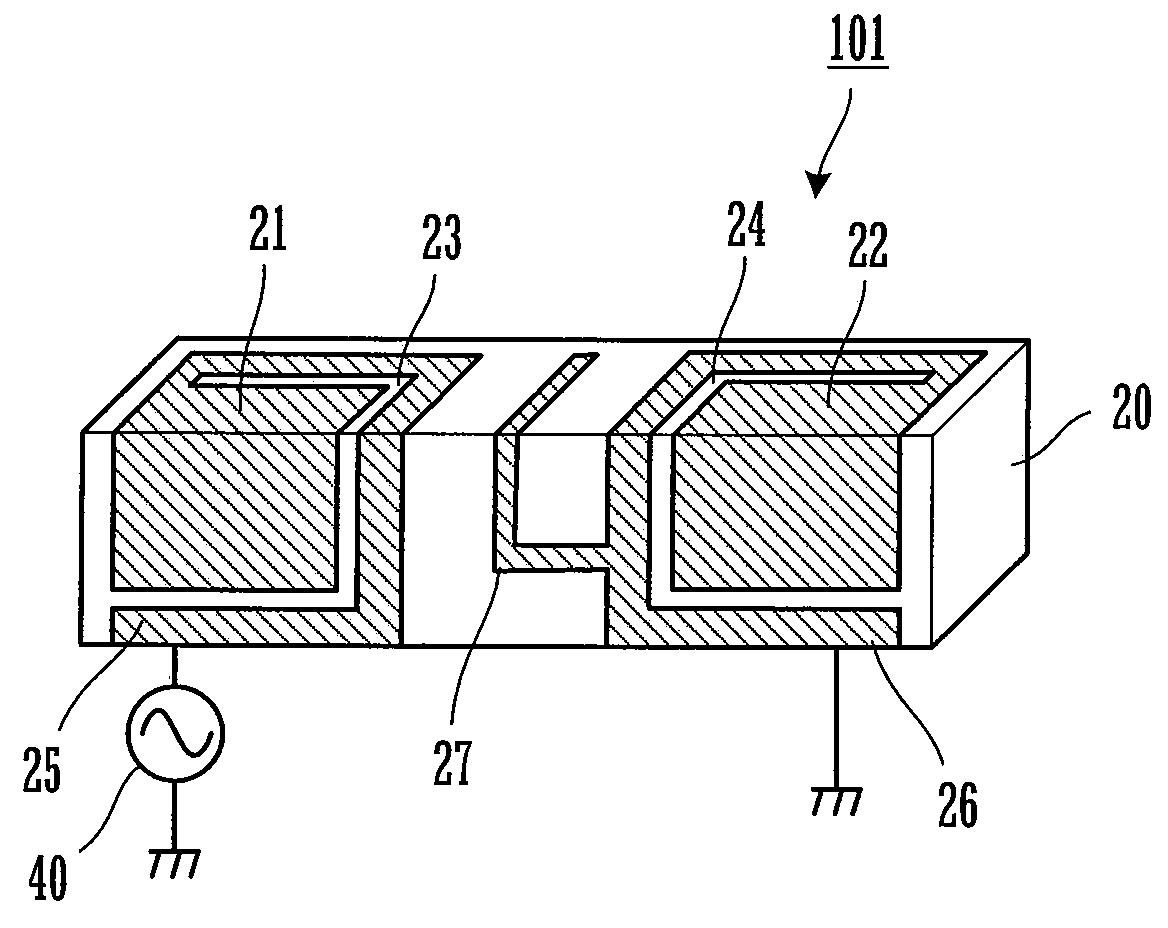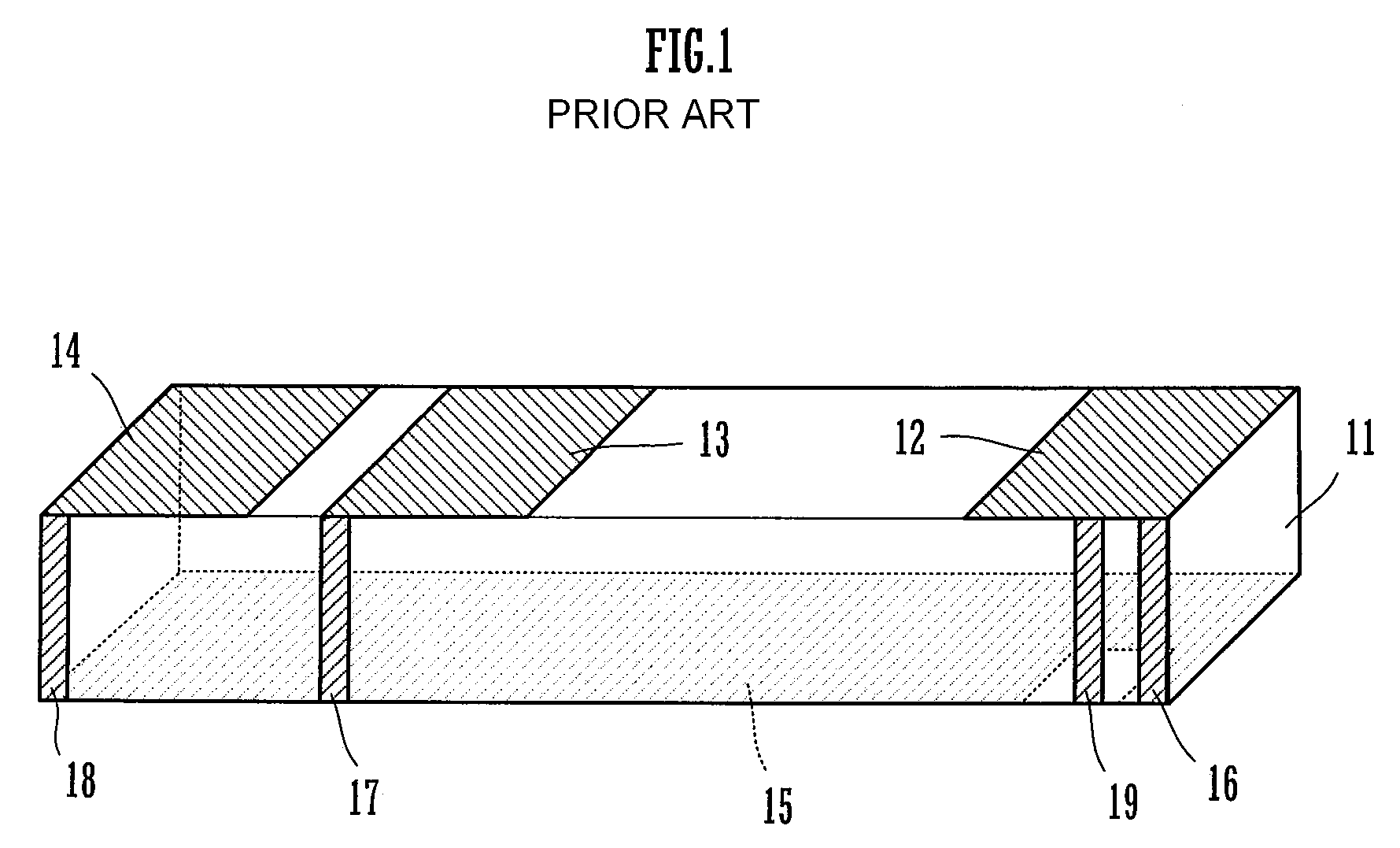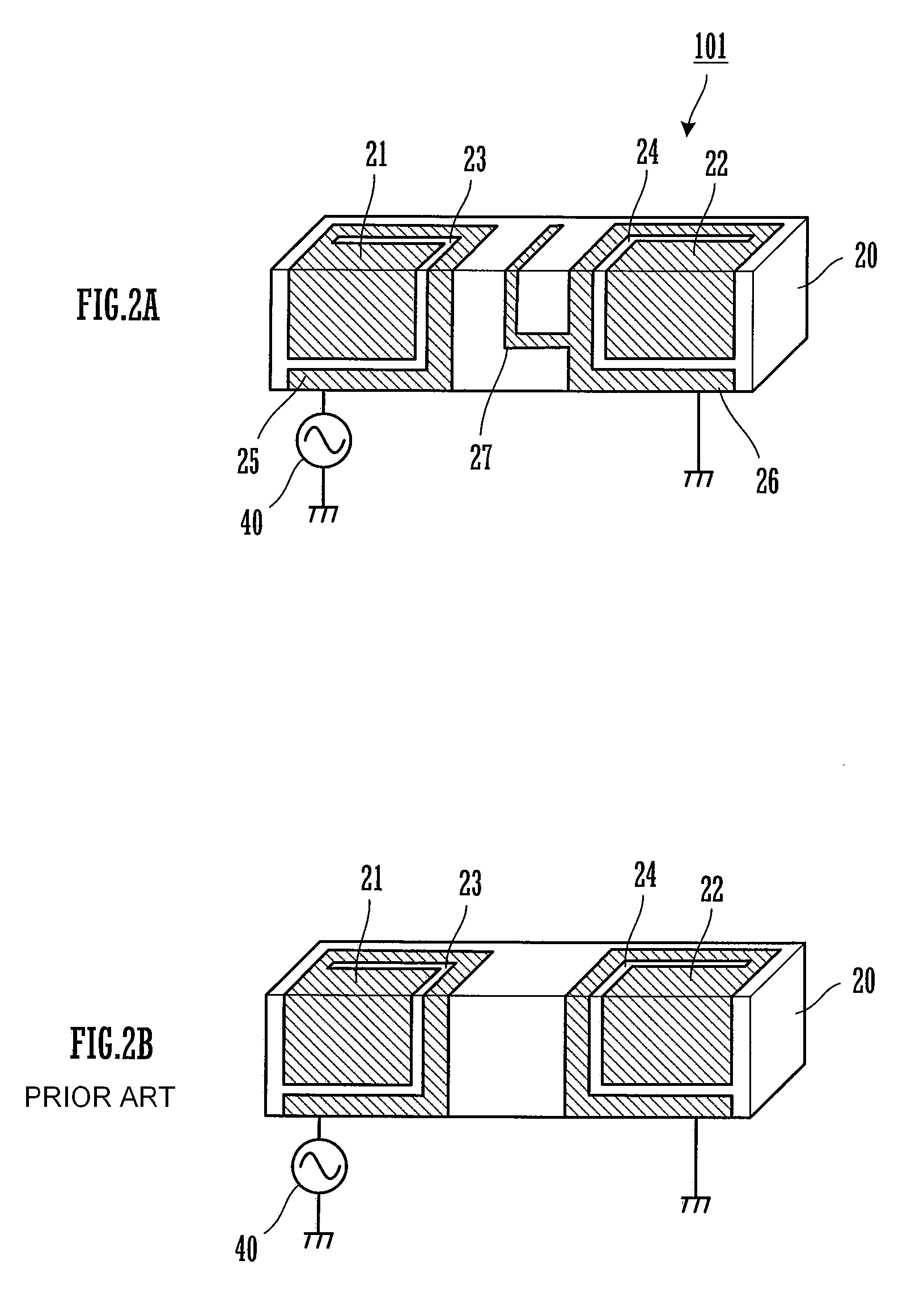Antenna and radio communication apparatus
- Summary
- Abstract
- Description
- Claims
- Application Information
AI Technical Summary
Benefits of technology
Problems solved by technology
Method used
Image
Examples
first embodiment
[0035]An antenna according to a first embodiment and a radio communication apparatus will be described with reference to FIGS. 2A, 2B, 3A and 3B.
[0036]FIG. 2A is a perspective view of the antenna according to the first embodiment, and FIG. 2B is a perspective view of an antenna as a comparative example therefor.
[0037]As shown in FIG. 2A, the antenna 101 according to the first embodiment has a feeding radiation electrode 21 and a non-feeding radiation electrode 22 that each two-dimensionally extend from the front side surface (as seen in the figure) to a top surface of a parallelepiped dielectric base 20. A material of the dielectric base 20 is a compound dielectric material including a dielectric inorganic filler and an organic polymer material, or a combination of a dielectric material and a magnetic material.
[0038]Examples of the dielectric inorganic filler are high dielectric constant ceramics such as calcium titanate and titanium oxide.
[0039]An example of the organic polymer mat...
second embodiment
[0050]FIG. 4 is a plan view of an antenna 102 according to a second embodiment.
[0051]Although, in the first embodiment, the various types of electrodes are formed on two sides of a parallelepiped dielectric base, in the second embodiment, the electrodes are formed on a substrate. In FIG. 4, on a top surface of a substrate 30, a feeding radiation electrode 31 and a non-feeding radiation electrode 32 that extend two-dimensionally are provided. In the feeding radiation electrode 31 and the non-feeding radiation electrode 32, spiral slits 33 and 34 are respectively formed. The slit 33 formed in the feeding radiation electrode 31 extends from a feeding end 35 in an inward direction, and the slit 34 formed in the non-feeding radiation electrode 32 extends from a ground end 36 in an inward direction.
[0052]A branch electrode 37 is formed from the non-feeding radiation electrode 32 toward the side of the feeding radiation electrode 31. In this example, the branch electrode 37 is formed so as...
third embodiment
[0058]A radio communication apparatus such as a cellular phone is configured in the following manner by using the antennas shown in the first and second embodiments.
[0059]For example, in the case of using the antenna 101 shown in FIG. 2, a radio communication circuit including a radio-frequency generating and feeding means 40 is provided on a circuit board, and a non-ground region is provided at an end of the circuit board (not shown). The antenna 101 is surface-mounted in the non-ground region. This makes it possible to configure a cellular phone for CDMA800 / 2000.
[0060]In addition, in the case of using the antenna 102 shown in FIG. 4, the antenna 102 including the substrate 30 is surface-mounted in the non-ground region of the circuit board (not shown), or each pattern of the antenna 102 is directly formed on the circuit board without being formed on a substrate 30.
PUM
 Login to View More
Login to View More Abstract
Description
Claims
Application Information
 Login to View More
Login to View More - R&D
- Intellectual Property
- Life Sciences
- Materials
- Tech Scout
- Unparalleled Data Quality
- Higher Quality Content
- 60% Fewer Hallucinations
Browse by: Latest US Patents, China's latest patents, Technical Efficacy Thesaurus, Application Domain, Technology Topic, Popular Technical Reports.
© 2025 PatSnap. All rights reserved.Legal|Privacy policy|Modern Slavery Act Transparency Statement|Sitemap|About US| Contact US: help@patsnap.com



